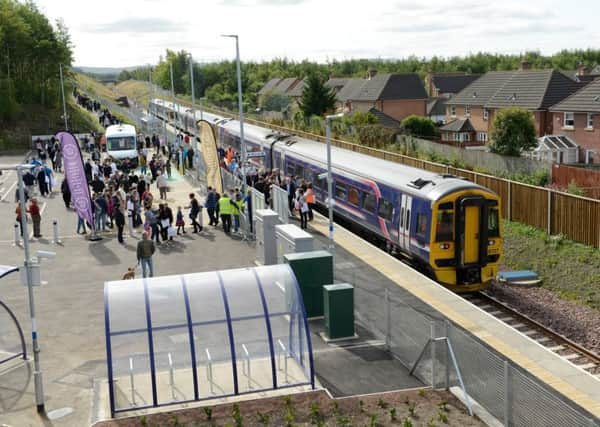Leader comment: Borders rail extension must not repeat mistakes


The prospect was mooted by then First Minister Alex Salmond the previous year when it was predicted the “enormous” success of the 30-mile Edinburgh-Tweedbank section would be the catalyst to rebuild the remaining 70 miles.
The Scottish Government was markedly more cautious over the prospects of an extension when the line reopened, insisting that the case would depend on how successful the Edinburgh-Tweedbank service proved.
Advertisement
Hide AdAdvertisement
Hide AdThe Borders Railway has had its critics over the last 18 months, but it is widely regarded as a success story, with more than a million passengers using the service in the first year alone, exceeding expectations.
Now the Scottish Government has confirmed that the prospect of a full extension is to be properly considered for the first time since the reopening as part of a wide-ranging study into improving the transport network in the south-east of Scotland.
Analysis of the viability of an extension is to be applauded. Once a network like this is in place, its economic potential has to be maximised. The same principle can be applied to Edinburgh’s tram system.
There was some controversy when the Borders Railway was stopped short at Tweedbank, cutting off Hawick, originally connected to Edinburgh via the Waverley Route. An extension to Carlisle would bring this significant population back into the equation. It would also go a long way towards improving connectivity for many living or working in Edinburgh and the Borders.
But as we look forward, we would do well to look back first of all. Mistakes were made in the construction of the new Borders Railway. Most notably, the use of sections of single track means the service cannot be as reliable and punctual as it should be. There is no excuse for repeating such a mistake in any extension of the route.
It remains to be seen how much an extension to Carlisle will cost or where the finance would come from, but a cut-price extension should not be attempted. Doubling the length of the line without learning the mistakes of the past will double the number of problems currently experienced, such as services either not running to time or suffering from serious over-crowding.
And while we applaud the prospect of development offered by an extension of the Borders line, we should not forget other parts of the country. Organisers of an impressive campaign calling for the re-opening of a five-mile stretch of mothballed railway track in Fife, from Thornton to Leven, must be wondering what more they have to do to persuade the Scottish Government to reconnect what is described as the largest urban area in Scotland without a train service.
Further investment in the Borders line would be a bitter setback for an area that is crying out for regeneration support.